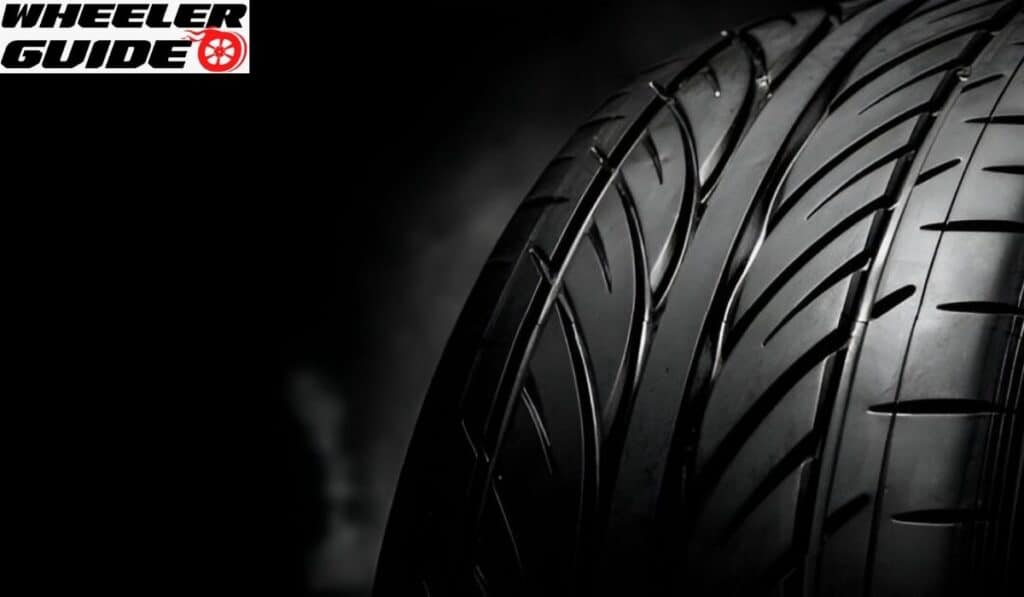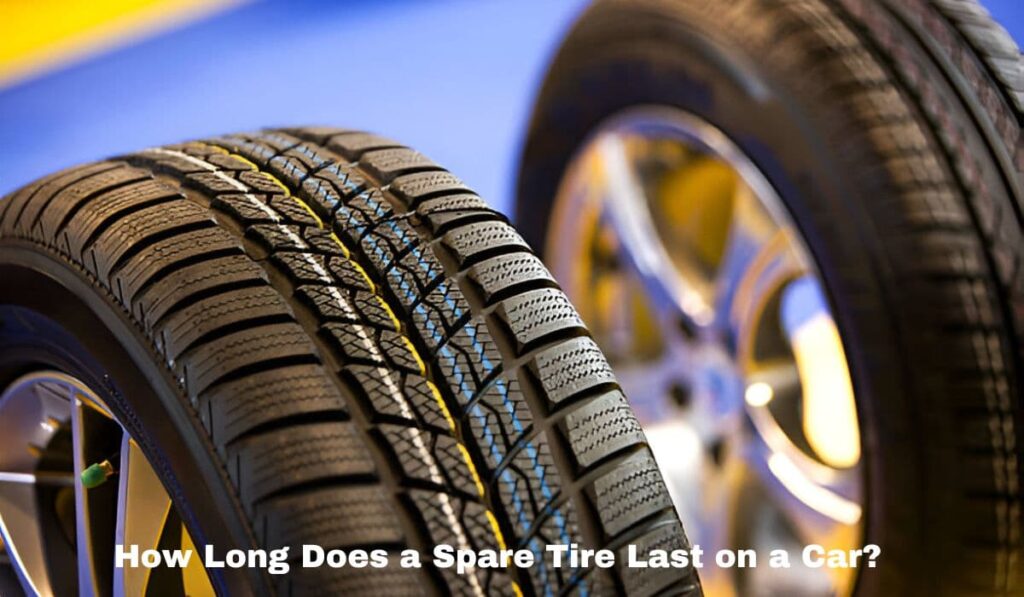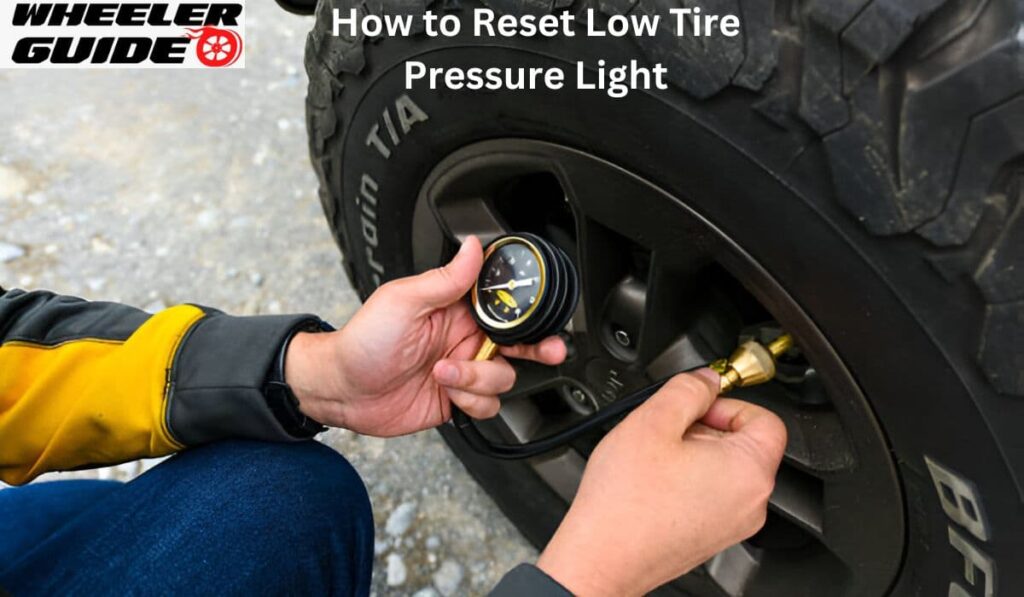Inner tire wear is a common issue that can lead to decreased tire performance and safety. This problem occurs when the inner edge of a tire wears down faster than the rest of the tread. The main causes of inner tire wear include poor wheel alignment, incorrect tire pressure, and worn suspension components.
Fixing inner tire wear requires identifying the root cause and taking appropriate action. Regular vehicle maintenance and timely checks are key to preventing this issue. Solutions may involve adjusting wheel alignment, correcting tire pressure, or replacing damaged suspension parts. By addressing these factors, drivers can extend the life of their tires and improve their vehicle’s overall performance and safety on the road.
Understanding Inner Tire Wear
Inner tire wear occurs when the inside edge of a tire wears faster than the rest. This issue can lead to reduced tire life and safety concerns. Knowing the components and symptoms helps identify and address the problem early.
Components of Tire Wear
Tire wear involves several key parts. The tread is the outermost layer that contacts the road. It has grooves and patterns for grip. The sidewall provides support and flexibility.
The inner edge is where excessive wear often occurs. This area takes more stress during turns. The outer edge can also wear, but inner wear is more common. Tire wear patterns can reveal alignment issues. Even wear across the tread is ideal. Uneven wear points to problems with suspension or alignment.
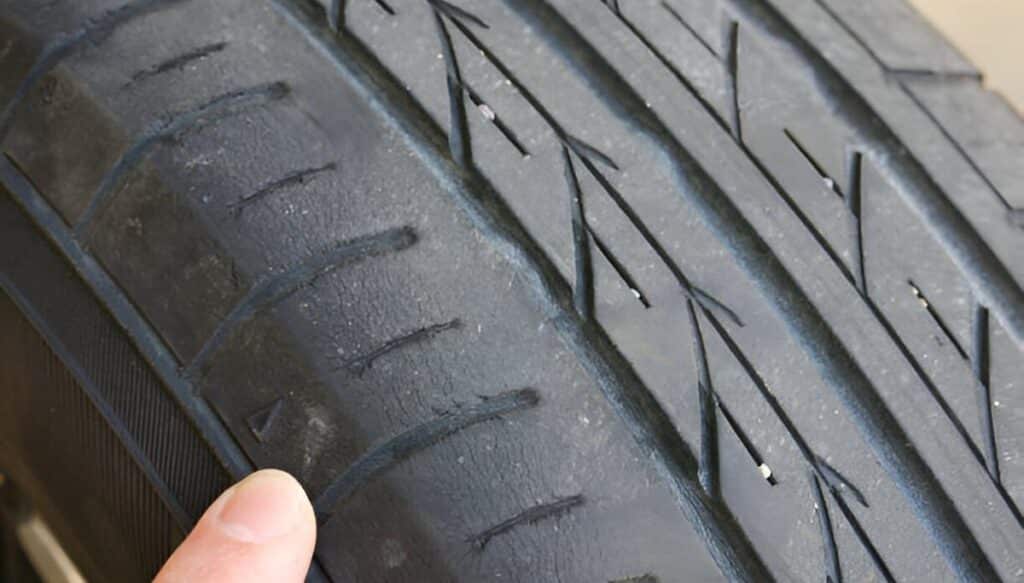
Common Symptoms of Inner Tire Wear
Drivers should check for signs of inner tire wear regularly. Visual inspection is the first step. Look for more wear on the inside edge compared to the center and outer edge.
Feeling the tire can also help. Run a hand along the tread. If the inner edge feels smoother or has less tread depth, it indicates wear.
Unusual vehicle behavior can signal tire problems. Vibrations at highway speeds may occur. The car might pull to one side while driving straight. Handling may feel less responsive, especially during turns.
Tire pressure changes can be a sign. Innerwear sometimes causes faster air loss on that side. Regular pressure checks can catch this issue early.
Causes of Inner Tire Wear
Inner tire wear happens when the inside edge of a tire wears down faster than the rest. This can lead to unsafe driving conditions and reduced tire life. Several factors contribute to this problem.
Improper Wheel Alignment
Misaligned wheels are a major cause of inner tire wear. When wheels are not properly aligned, it affects how tires contact the road.
The camber angle is crucial. A negative camber causes the top of the tire to tilt inward. This puts more pressure on the inner edge of the tire.Toe alignment also matters. If toes are set incorrectly, it can cause uneven tire wear.
Regular alignment checks are important. Drivers should get their wheels aligned every 6,000 to 8,000 miles. They should also check alignment after hitting potholes or curbs.
Worn Suspension Components
Damaged suspension parts can lead to inner tire wear. Key components include:
- Ball joints
- Control arm bushings
- Struts
- Springs
When these parts wear out, they can’t hold the wheels in the correct position. This causes uneven pressure on tires. Bad shocks are another culprit. They can’t absorb bumps properly. This leads to bouncing, which wears tires unevenly.
Regular inspections can catch these issues early. Mechanics should check suspension parts during routine maintenance.
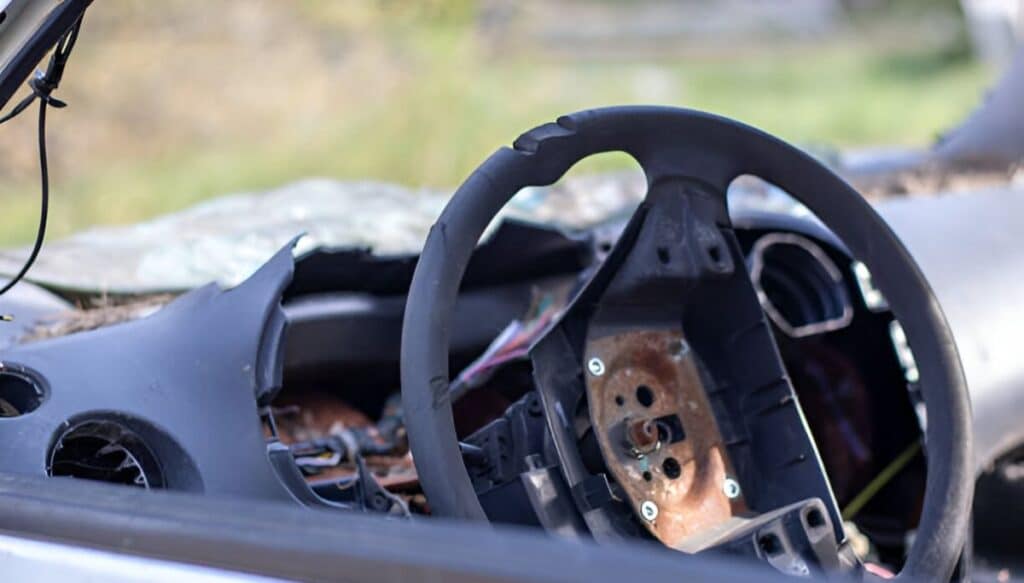
Faulty Steering System
Problems with the steering system can cause inner tire wear. This is especially true for front tires.
Worn tie rods are a common issue. They connect the steering system to the wheels. When they’re loose or damaged, wheels can’t stay properly aligned. Power steering problems can also contribute. If the system isn’t working correctly, it can put extra stress on tires.
Drivers might notice:
- Steering wheel vibration
- Car pulling to one side
- Uneven tire wear
Regular steering system checks are important. They can prevent inner tire wear and improve overall vehicle safety.
Impacts of Tire Inflation on Wear Patterns
Tire inflation plays a crucial role in how tires wear over time. The amount of air in your tires affects how they contact the road, leading to different wear patterns.
Effects of Overinflation
Overinflated tires cause the center of the tread to bulge outward. This leads to faster wear in the middle of the tire. The tire’s contact patch becomes smaller, reducing grip and traction.
Overinflation can make the ride feel harsh and bumpy. It may also lead to poor handling, especially in wet conditions. The reduced contact area increases the risk of hydroplaning.
Drivers might notice decreased fuel efficiency with overinflated tires. The altered shape can increase rolling resistance, making the vehicle work harder to move forward.
Effects of Underinflation
Underinflated tires show wear on both inner and outer edges. The center of the tire lifts off the road, putting more pressure on the sides. This creates a distinctive U-shaped wear pattern.
Underinflation causes excessive flexing of the tire sidewalls. This flexing generates heat, which can lead to tire failure or blowouts. It also increases rolling resistance, reducing fuel economy.
Handling becomes less responsive with underinflated tires. The steering feels sluggish, and the vehicle may wander or pull to one side. Braking distances can increase, posing a safety risk.
Regular tire pressure checks are essential to prevent these issues. Drivers should follow the manufacturer’s recommended pressure for optimal performance and safety.
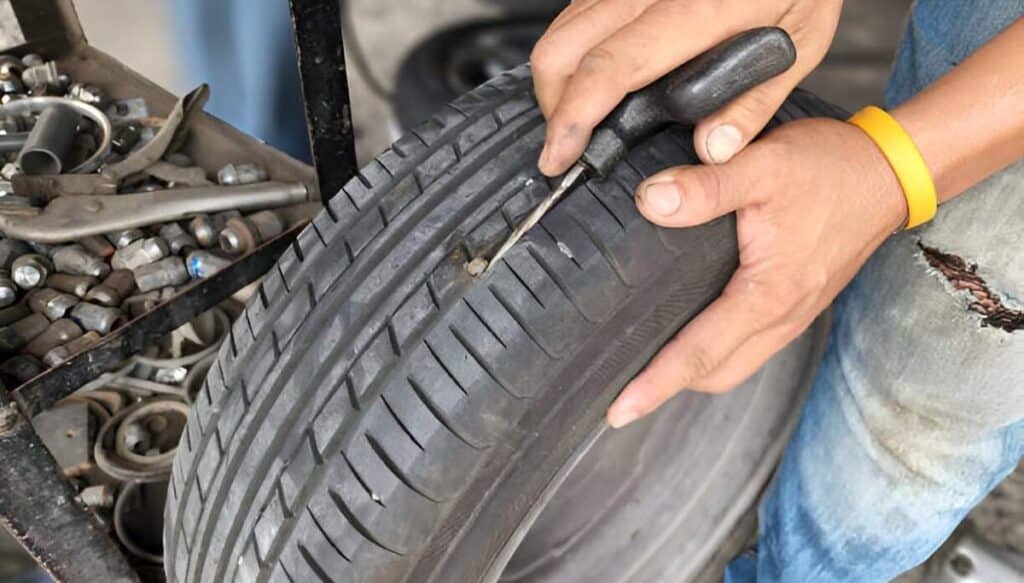
Diagnosing Inner Tire Wear
Spotting inner tire wear early can save you money and keep you safe. There are two main ways to check for this problem: looking at the tires and testing the car’s parts.
Visual Inspection
Start by looking at your tires closely. Check the inner edge for signs of excessive wear. This part of the tire might look smoother or more worn down than the rest.
Use a tire tread depth gauge to measure the tread. Compare the inner edge to the middle and outer edge. A big difference means there’s a problem. Look for other signs like cracks, bulges, or uneven wear patterns. These can point to alignment issues or damaged parts.

Mechanical Inspection
After looking at the tires, it’s time to check the car’s parts. Bad shocks can cause inner tire wear, so test them by pushing down on each corner of the car. It should bounce once and stop.
Check for loose or worn suspension parts. Shake each wheel to feel for play in the bearings or joints. Look for signs of a dented rim or bent axle. These can throw off your alignment and wear tires unevenly. Test your alignment at a shop. They can measure it precisely and tell you if it’s causing tire wear.
Solutions and Preventative Measures
Inner tire wear can be fixed and prevented with the right approach. Key steps include correcting alignment, replacing worn parts, proper inflation, and regular maintenance.
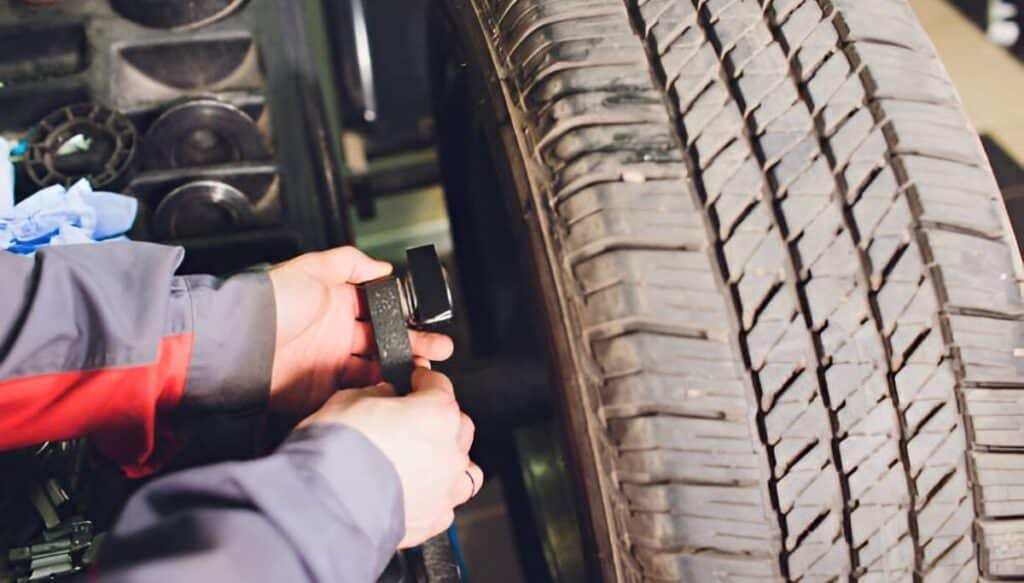
Correcting Alignment Issues
Proper wheel alignment is crucial for preventing inner tire wear. A mechanic can adjust the camber, caster, and toe angles to ensure even tire contact with the road.
Camber adjustment is especially important. The negative camber tilts the top of the wheel inward, causing more wear on the inner edge. A technician will adjust this to the manufacturer’s specifications.
Alignment should be checked every 6,000 miles or after hitting large potholes. Signs of misalignment include:
- Vehicle pulling to one side
- Steering wheel off-center when driving straight
- Uneven or rapid tire wear
Regular alignment checks can significantly extend tire life and improve vehicle handling.
Replacing Worn Suspension Parts
Worn suspension components can cause alignment issues and inner tire wear. Key parts to inspect include:
- Ball joints
- Control arm bushings
- Tie rod ends
- Struts or shocks
Failing ball joints can create a negative camber angle, leading to more wear on the inside shoulder of the tire. A mechanic can perform a thorough inspection to identify and replace any worn parts.
Bad shocks or struts can also contribute to uneven tire wear. They should be replaced if there’s excessive bouncing after hitting bumps or if the vehicle sways during turns.
Regular suspension checks can prevent costly tire replacements and ensure a smoother, safer ride.
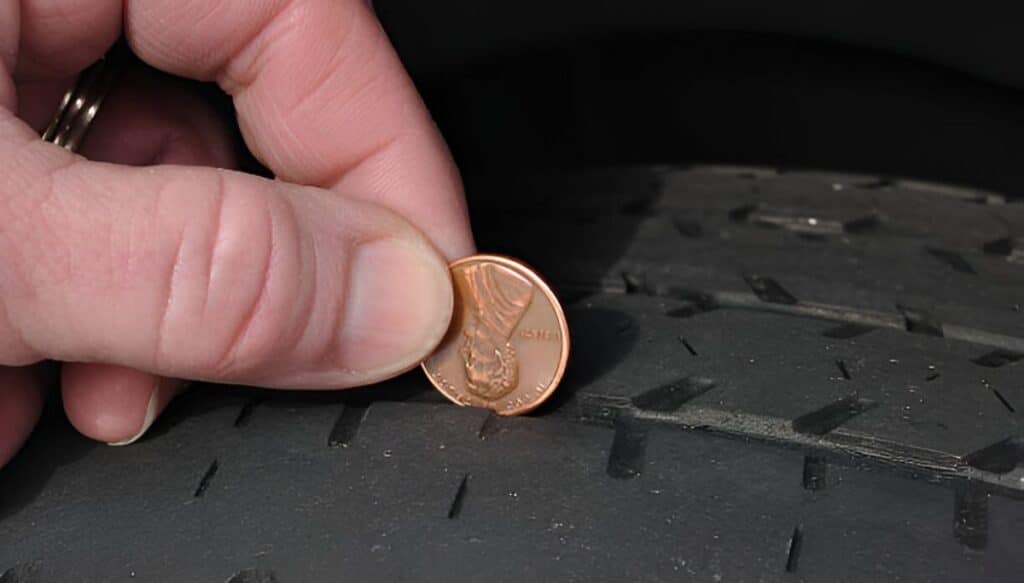
Maintaining Proper Tire Inflation
Correct tire pressure is essential for even wear and optimal performance. Under-inflated tires can cause excessive wear on the inner and outer edges.
Tire pressure should be checked at least once a month and before long trips. The correct pressure can be found in the vehicle’s manual or on the driver’s side door jamb.
Tips for proper inflation:
- Check the pressure when tires are cold
- Use a quality pressure gauge
- Don’t forget the spare tire
- Adjust pressure for heavy loads or towing
Proper inflation improves fuel efficiency, handling, and tire lifespan.
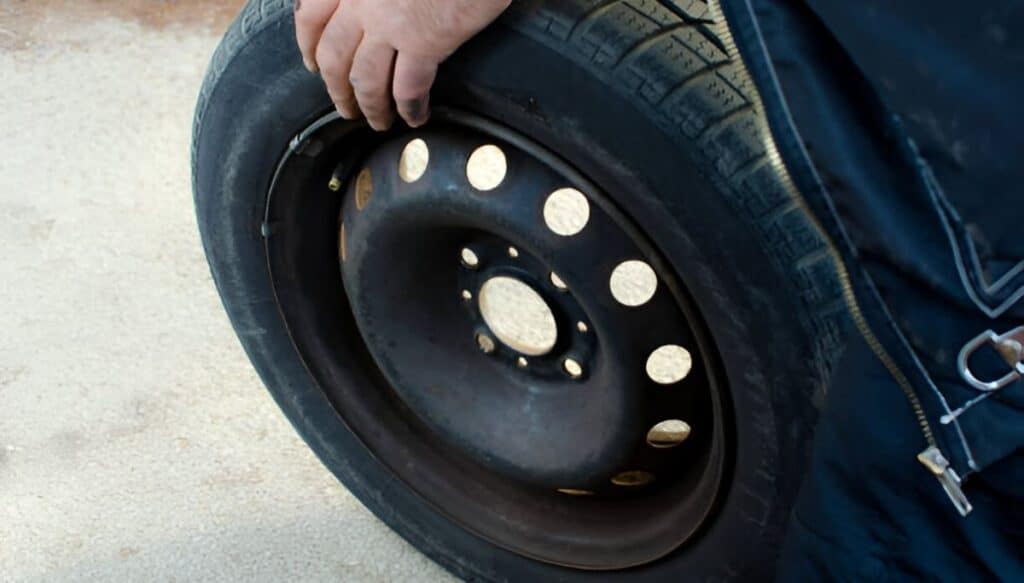
Regular Tire Rotation and Balance
Rotating tires helps distribute wear evenly across all four tires. Most vehicles need rotation every 5,000 to 8,000 miles.
Common rotation patterns:
- Forward Cross (for front-wheel drive)
- Rearward Cross (for rear-wheel and 4-wheel drive)
- X-Pattern (for some all-wheel drive vehicles)
Balancing ensures the tire and wheel assembly spins smoothly. Unbalanced tires can cause vibrations and uneven wear. Signs of imbalance include:
- Steering wheel vibration at highway speeds
- Uneven tread wear patterns
Tires should be balanced when mounted and during each rotation. This practice extends tire life and improves ride comfort.
Frequently Asked Questions
Inner tire wear can have multiple causes and impacts on vehicle safety. Understanding the common issues helps drivers identify and address problems early.
What are the primary causes of inner tire wear on vehicles?
The main causes of inner tire wear include misaligned wheels, worn suspension components, and improper tire pressure. Excessive camber angles can also lead to uneven wear on the inner edges of tires.
Why is only one of my tires exhibiting wear on the inside edge?
Single-tire inner wear often points to a localized issue. This could be a bent wheel, damaged suspension part, or uneven weight distribution in that corner of the vehicle.
Are there specific vehicle components whose failure can lead to inner tire wear?
Yes, several components can cause inner tire wear when they fail. Bad shocks, struts, or springs can alter the suspension geometry, leading to uneven tire contact with the road.
How does improper toe alignment contribute to inner tire wear?
Incorrect toe alignment, especially toe-out, causes tires to scrub against the road surface. This wears the inside edges of tires very quickly, reducing their lifespan and performance.
Is experiencing inner tire wear on the front tires exclusively a common issue?
While inner tire wear can occur on any wheel, it’s often more noticeable on front tires. This is due to the steering and weight transfer dynamics of most vehicles.
Can inner tire wear pose serious safety risks while driving?
Inner tire wear can indeed be dangerous. It impairs vehicle handling and stability, potentially leading to loss of control. In severe cases, it may cause tire blowouts, especially at high speeds.
